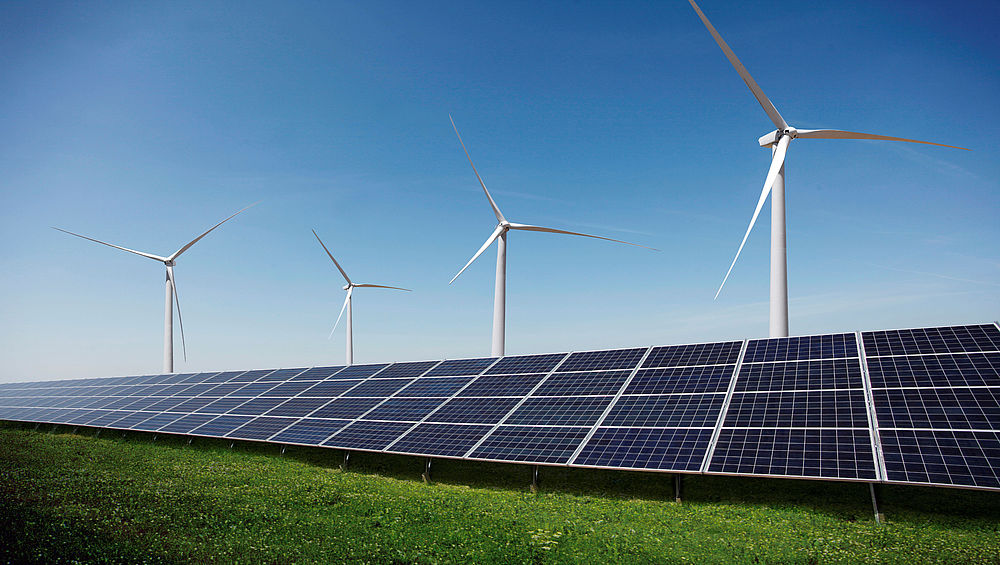
Renewable Capacity Statistics 2025, released by the International Renewable Energy Agency (IRENA), shows a massive increase in renewable power capacity during 2024, reaching 4,448 gigawatts (GW). The 585 GW addition last year indicates a 92.5% share of the total capacity expansion and a record rate of annual growth (15.1%).
Although 2024 marks yet another benchmark in renewable energy capacity and growth, progress still falls short of the 11.2 terawatts needed to align with the global goal to triple installed renewable energy capacity by 2030. To reach this goal, renewable capacity must now expand by 16.6 % annually until 2030.
In addition, progress yet again reflects significant geographic disparities. As in previous years, most of the increase occurred in Asia, with the greatest share being contributed by China—almost 64% of the global added capacity—while Central America and the Caribbean contributed the least at only 3.2%. The G7 and G20 countries respectively accounted for 14.3% and 90.3% of new capacity in 2024.

Francesco La Camera, Director-General of IRENA, highlighted that the continuous growth of renewables proves their economic viability and ease of deployment. Despite breaking expansion records, challenges like regional disparities and the looming 2030 deadline persist. He urged governments to use NDCs 3.0 to outline clear renewable plans and called for stronger global collaboration, especially to support the Global South.
United Nations Secretary-General António Guterres highlighted the remarkable progress of renewable energy, stating that it is driving the decline of the fossil fuel era. He noted that the record-breaking growth of renewables is creating jobs, reducing energy costs, and improving air quality. Guterres emphasized that renewables are revitalizing economies but stressed the need for a faster and fairer transition, ensuring all countries have equal access to affordable, clean energy.

Solar and wind energy continued to expand the most, jointly accounting for 96.6% of all net renewable additions in 2024. Over three-quarters of the capacity expansion was in solar energy, which increased by 32.2%, reaching 1,865 GW, followed by wind energy, which grew by 11.1%.
The large net decommissioning of non-renewable power in some regions has contributed to the upward trend of renewables capacity. However, more needs to be done to reach the goal of tripling renewables capacity by 2030 and the Paris Agreement. Over the past few years, IRENA has been pressing for clear, quantifiable renewable capacity targets in NDCs 3.0. To this end, the Agency has been assisting in the enhancement and implementation of its members’ NDCs with a focus on the energy sector through its country engagement.

Technology highlights:
- Solar: Solar photovoltaics increased by 451.9 GW last year. China alone added 278 GW to the total expansion, followed by India (24.5 GW).
- Hydropower (excluding pumped storage hydropower): Capacity reached 1,283 GW, demonstrating a notable rebound from 2023, driven by China. Ethiopia, Indonesia, Nepal, Pakistan, Tanzania, and Viet Nam added more than 0.5 GW each.
- Wind: Wind energy expansion declined slightly, to a total of 1,133 GW capacity by the end of 2024. Expansion was once again dominated by China and the United States (US).
- Bioenergy: Expansion rebounded in 2024, with an increase of 4.6 GW of capacity compared to an increase of 3.0 GW in 2023. The growth was driven by China and France, with 1.3 GW of additions each.
- Geothermal: Geothermal energy increased by 0.4 GW overall, led by New Zealand, followed by Indonesia, Türkiye, and the US.
- Off-grid electricity (excluding Eurasia, Europe and North America): capacity expansion nearly tripled, growing by 1.7 GW to reach 14.3 GW. Growth was dominated by off-grid solar energy, which reached 6.3 GW by 2024.
Related
Source link




